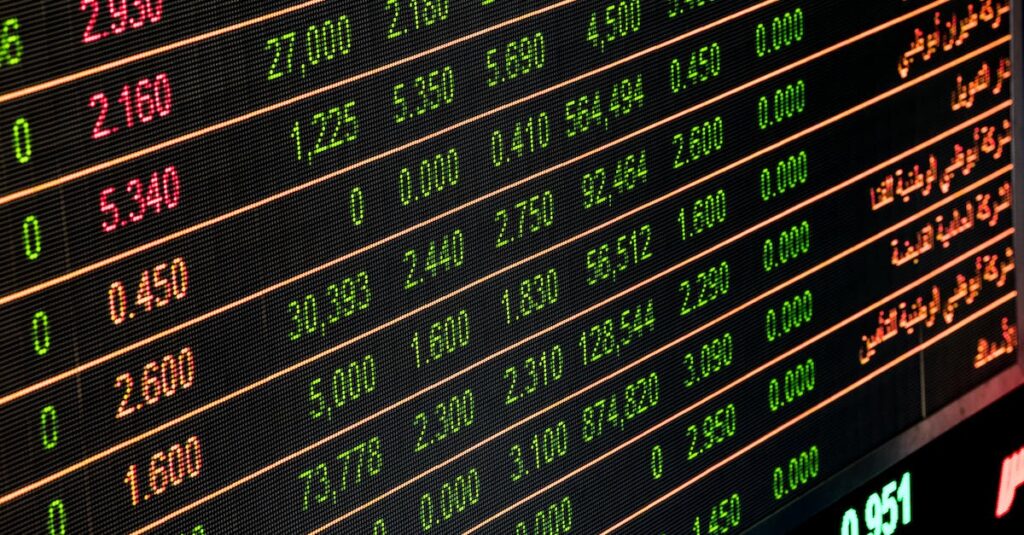When it comes to commodities trading, having a solid grasp of the terminology is crucial. In this financial glossary, I’ll break down the key terms and concepts that every trader should know. From “futures” to “hedging” and “spot price” to “arbitrage,” understanding these terms can make a significant difference in your trading strategy.
Navigating the world of commodities trading can be complex, but with the right knowledge, you can make informed decisions and maximize your potential for success. Whether you’re a seasoned trader or just starting out, this glossary will serve as a valuable resource to enhance your understanding of the commodities market. Stay tuned as we delve into the essentials of commodities trading terminology to help you stay ahead in this dynamic and exciting market.
Key Takeaways
- Futures contracts involve agreements to buy or sell commodities at a predetermined price on a future date, allowing for leverage and risk management strategies.
- Hedging strategies are vital in commodities trading to manage risk from price fluctuations through techniques like futures contracts, options contracts, and swaps.
- Spot price represents the current market price for immediate delivery, while futures price is the agreed-upon price for future delivery, influencing trading decisions and risk management.
- Arbitrage opportunities in commodities trading can be profitable by exploiting price differences between spot and futures markets through strategies like cash and carry arbitrage and reverse cash and carry arbitrage.
Futures Contracts
Futures contracts are agreements to buy or sell a specific quantity of a commodity at a predetermined price on a specified future date. Leverage is a key feature in futures trading, as traders only need to put down a fraction of the contract’s total value to enter a position. This allows for the potential of higher returns, but also comes with increased risk.
- Speculation: Many traders use futures contracts to speculate on the price movements of commodities without actually owning the physical asset.
- Risk Management: Hedgers utilize futures to protect against price fluctuations, ensuring a more predictable cost for their commodities.
Understanding the intricacies of futures contracts is essential for success in commodities trading. By leveraging these contracts effectively, traders can capitalize on market movements and optimize their trading strategies for profitability.
Hedging Strategies
When it comes to commodities trading, Hedging Strategies play a vital role in managing risk and protecting against adverse price movements. As commodity prices can fluctuate significantly due to various factors like supply and demand dynamics, geopolitical events, and economic indicators, having effective hedging strategies in place is crucial.
Here are some common hedging techniques that traders use in commodities trading:
- Futures Contracts: These allow traders to lock in a price for a future delivery date, providing protection against price fluctuations.
- Options Contracts: Options give traders the right, but not the obligation, to buy or sell a commodity at a predetermined price within a specific timeframe.
- Swaps: Swaps involve exchanging cash flows based on the price movements of commodities, helping traders manage exposure to price risk.
By incorporating Hedging Strategies into their trading plans, traders can mitigate potential losses and safeguard their positions in volatile markets. It’s essential to have a deep understanding of these strategies and their implications to make informed decisions and navigate the complexities of the commodities market effectively.
Spot Price vs. Futures Price
In commodities trading, understanding the difference between spot price and futures price is essential for effective risk management. The spot price is the current market price at which a commodity can be bought or sold for immediate delivery. On the other hand, the futures price is the price at which a specific commodity can be bought or sold at a specified future date. Here are some key points to distinguish between the two:
- Spot Price:
- Reflects current market conditions.
- Involves immediate delivery and payment.
- Sensitive to supply and demand changes.
- Futures Price:
- Agreed-upon price for future delivery.
- Allows for price speculation and hedging.
- Influenced by factors like interest rates and storage costs.
By monitoring both spot and futures prices, traders can identify opportunities to profit from price disparities and manage their exposure to market fluctuations. This knowledge can help traders make informed decisions when entering or exiting positions in the commodities market.
Arbitrage Opportunities
When it comes to commodities trading, Arbitrage Opportunities can be lucrative for traders who can capitalize on price differences between the spot and futures markets. By understanding the relationship between spot prices and futures prices, I can identify arbitrage opportunities and potentially make profits with minimal risk.
One common arbitrage strategy is cash and carry arbitrage, where I simultaneously enter into long and short positions in the spot and futures markets to profit from price differentials. This strategy requires careful monitoring of market prices and timely execution to maximize gains.
Another way to exploit arbitrage opportunities is through reverse cash and carry arbitrage, where I take advantage of differences between futures prices and the cost of carrying the underlying asset. By leveraging this strategy, I can potentially profit from market inefficiencies and price discrepancies.
Arbitrage Opportunities in commodities trading require a keen eye for market trends, quick decision-making, and efficient execution. By staying informed about market developments and monitoring price movements, I can identify and act on profitable arbitrage opportunities in the dynamic commodities market landscape.
Conclusion
Trading commodities presents exciting opportunities for arbitrage, allowing me to leverage price differentials for profit. By implementing strategies like cash and carry arbitrage, I can capitalize on market inefficiencies and maximize returns. Staying vigilant and acting swiftly based on market trends is crucial in this dynamic landscape. With a keen eye on price differentials and a proactive approach to execution, I can make informed decisions and effectively manage risks. The commodities market offers a platform for astute traders to navigate through arbitrage opportunities, paving the way for lucrative returns and successful trading endeavors.
Frequently Asked Questions
What are Arbitrage Opportunities in commodities trading?
Arbitrage Opportunities in commodities trading involve exploiting price differences between spot and futures markets to make a profit. Traders take advantage of these price variations by buying low in one market and selling high in another to capitalize on the price differential.
What are cash and carry arbitrage and reverse cash and carry arbitrage?
Cash and carry arbitrage involves buying a commodity in the spot market and simultaneously selling it in the futures market to profit from the price disparity. Reverse cash and carry arbitrage, on the other hand, entails selling in the spot market and buying in the futures market, also aiming to benefit from price differences.
How can traders benefit from monitoring market prices?
By closely monitoring market prices and trends, traders can identify potential arbitrage opportunities and execute trades swiftly to maximize profits. Staying informed about price movements helps traders make well-informed decisions and react promptly to market dynamics, enabling them to seize profitable trading opportunities in commodities.
Why is vigilance essential in commodities trading?
Vigilance is crucial in commodities trading as market conditions can change rapidly, affecting price differentials and arbitrage opportunities. Traders need to stay alert and monitor price movements continuously to capitalize on profitable trades. By remaining vigilant, traders can adapt to changing market scenarios and make timely decisions to mitigate risks and optimize their trading strategies effectively.



